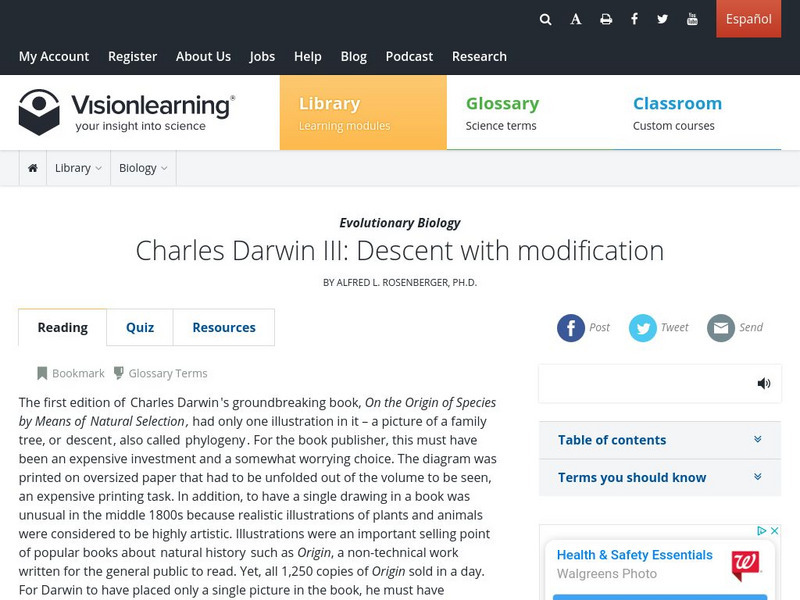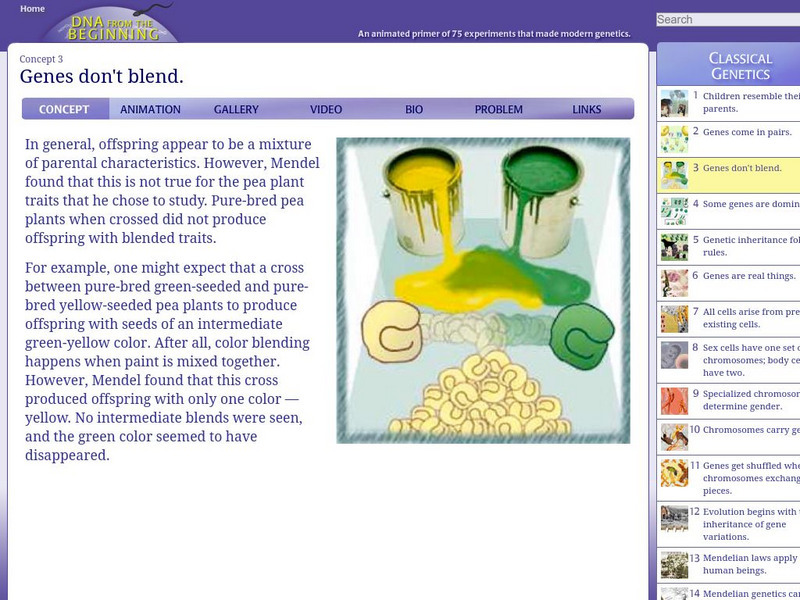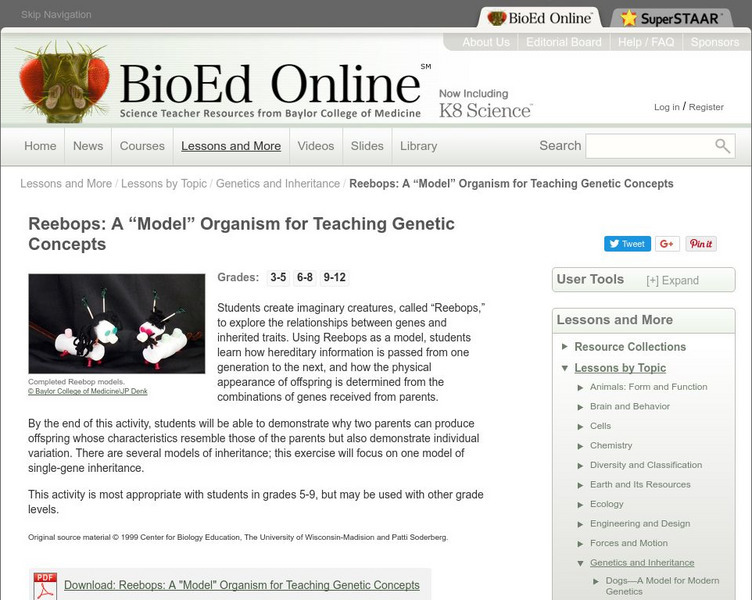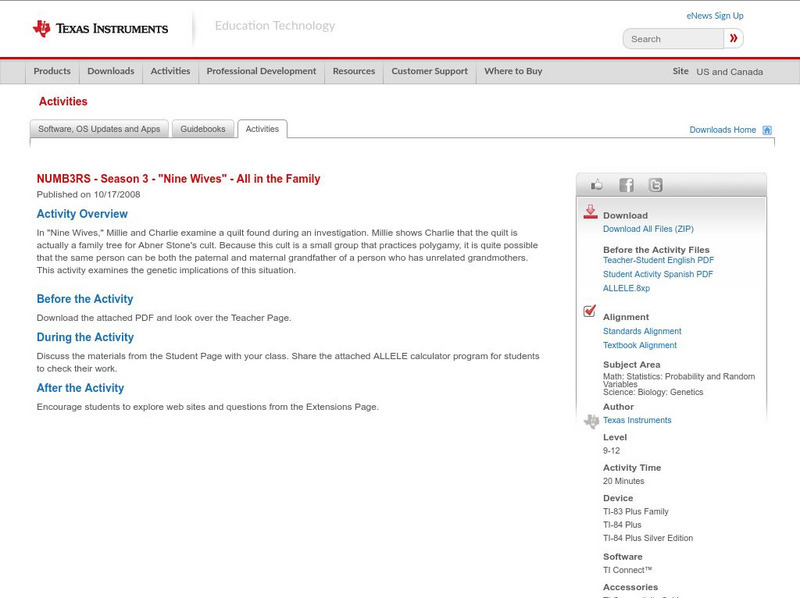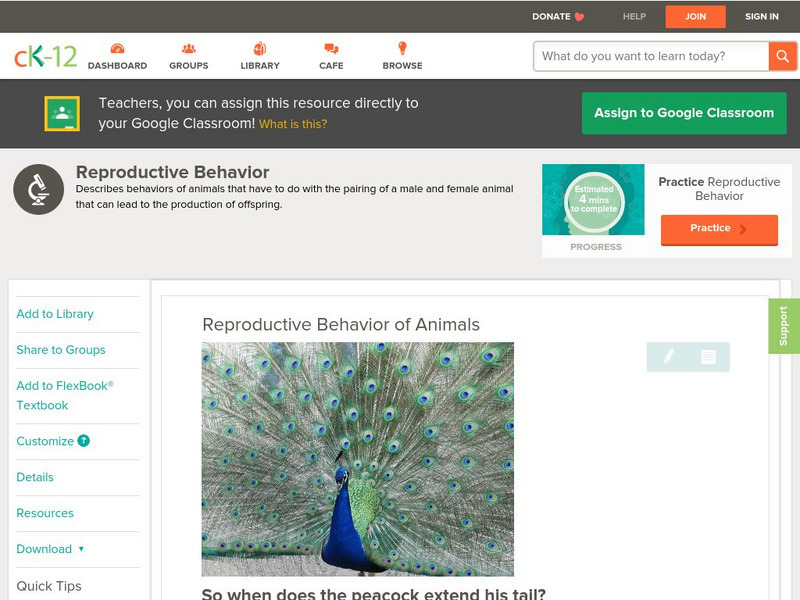Curated OER
Plant Growth
First graders investigate how seeds are moved and how plants grow. In this plant growth lesson, 1st graders listen to stories, play a game, and view a PowerPoint about plant growth. Students examine various seeds and recognize how they...
The Wonder of Science
The Wonder of Science: 1 Ls3 1:plant and Animal Structures Parents and Offspring
This NSTA vetted source includes resources to teach that young plants and animals are alike, but not exactly like, their parents. Included are assessment ideas, videos, examples, lesson plans, and photos of student work.
Better Lesson
Better Lesson: Who's Your Animal Parent?
Do all animal babies look like their parents? Let's explore animal babies and find out the answer to this scientific question! Learners will explore animal parents and animal babies through a matching game. Included in this activity are...
E-learning for Kids
E Learning for Kids: Science: Easter Island: Why Do Young Grow Up to Look Like Their Parents?
Kevin and his grandfather, Omag are going to the zoo. Join them and learn all about animal classification and life cycles.
Vision Learning
Visionlearning: Biology: Charles Darwin Iii: Descent With Modification
Instructional module focusing on Charles Darwin's theory of Descent with Modification. Discusses how slight changes from parent to offspring create variation and potentially create new species over time. Site also includes an interactive...
American Museum of Natural History
American Museum of Natural History: Find My Plankton Baby Picture
By observing photos of plankton at different life stages, students can obtain information that will allow them to construct evidence-based accounts of how parents and offspring don't always look alike.
Open Curriculum
Open Curriculum: Meiosis
Students learn about asexual reproduction and explain the genetic relationship between parent and offspring.
TeachEngineering
Teach Engineering: Heredity Mix 'N Match
This site includes a lesson plan designed to teach students how genetic traits are passed down from parents to offspring. Students will explore such concepts as random selection, chrosomes, genotypes and phenotypes using jelly beans and...
Vision Learning
Visionlearning: Genetics: Gene Expression
Explore the connection of genes and enzymes in regards to heredity and genetics. Concepts associated with dominant and recessive traits are also presented.
Oklahoma State University
Oklahoma State University: Ag in the Classroom: Hairy Heredity [Pdf]
A simulation where students flip coins to mimic how parents pass genetic traits to their offspring through heredity. This activity also illustrates the difference between dominant and recessive genes, and how they interact with each...
Cold Spring Harbor Laboratory
Dna From the Beginning: Genes Don't Blend
Learn how Gregor Mendel's study of plants increased scientific knowledge regarding genetic traits.
BioEd Online
Bio Ed Online: Reebops: A "Model" Organism for Teaching Genetic Concepts
For this lesson students create imaginary creatures, called "Reebops," to explore the relationships between genes and inherited traits. Using Reebops as a model, students learn how hereditary information is passed from one generation to...
Science Buddies
Science Buddies: Investigate Alien Genetics
In this activity, you will use an alien model to demonstrate how genes or physical traits are passed on from parents to their offspring.
Other
Gene Expression & Regulation
Provides some very straight forward information regarding genetic information an DNA. Find out about synthesizing proteins, the Central Dogma of molecular biology, and much more.
Concord Consortium
Concord Consortium: Stem Resources: The Virtual Field
A virtual lab that explores how offspring inherit different traits from their parents. Investigate these traits both in animals and plants. Understand that variations in offspring can lead to traits that allow survival. Lab includes...
Biology Corner
Biology Corner: Pipe Cleaner Babies
Using chromosome and gene models, students play the roles of two parents in this genetics simulation. The object is to create four offspring and determine their genotypes and phenotypes, and determine the probability of having offspring...
Texas Instruments
Texas Instruments: Numb3 Rs: All in the Family
Based off of the hit television show NUMB3RS, this lesson shows students the scientific reasoning behind the societal taboo of incest. Students complete a Punnett square to determine the chances of an offspring inheriting two recessive...
TeachEngineering
Teach Engineering: The Benefits of Biodiversity
First, students toss coins to determine what traits a set of mouse parents possess, such as fur color, body size, heat tolerance, and running speed. Next they use coin tossing to determine the traits a mouse pup born to these parents...
PBS
Pbs: Our Genes/our Choices: The Probabilities of Problems: A Look at Inheritance
Learn how the genes inherited from two parents can be recombined in their offspring in this simulation activity. In addition, investigate the probabilities of passing on inherited genetic disorders.
Oswego City School District
Regents Exam Prep Center: Reproduction: Asexual Reproduction
Review of asexual reproduction shows how an offspring is produced from one parent. The methods of asexual reproduction (binary fission, budding, sporulation, and mitosis) are explained briefly accompanied by illustrations.
CK-12 Foundation
Ck 12: Life Science: Punnett Squares
[Free Registration/Login may be required to access all resource tools.] A Punnett square is a special tool derived from the laws of probability. It is used to predict the offspring from a cross, or mating between two parents. Learn more...
CK-12 Foundation
Ck 12: Life Science: 3.3 Punnett Squares
See how a Punnett square is a special tool used to predict the offspring from a cross, or mating between two parents.
How Stuff Works
How Stuff Works: How Evolution Works
Bacteria reproduce asexually. This means that, when a bacteria cell splits, both halves of the split are identical -- they contain exactly the same DNA. The offspring is a clone of the parent.
CK-12 Foundation
Ck 12: Biology: Reproductive Behavior of Animals
[Free Registration/Login may be required to access all resource tools.] An overview of the reproductive behaviors of animals.
Other popular searches
- Baby Animals and Parents
- Animal Babies and Parents
- Animal Parents and Offspring
- Parents and Offspring Names






